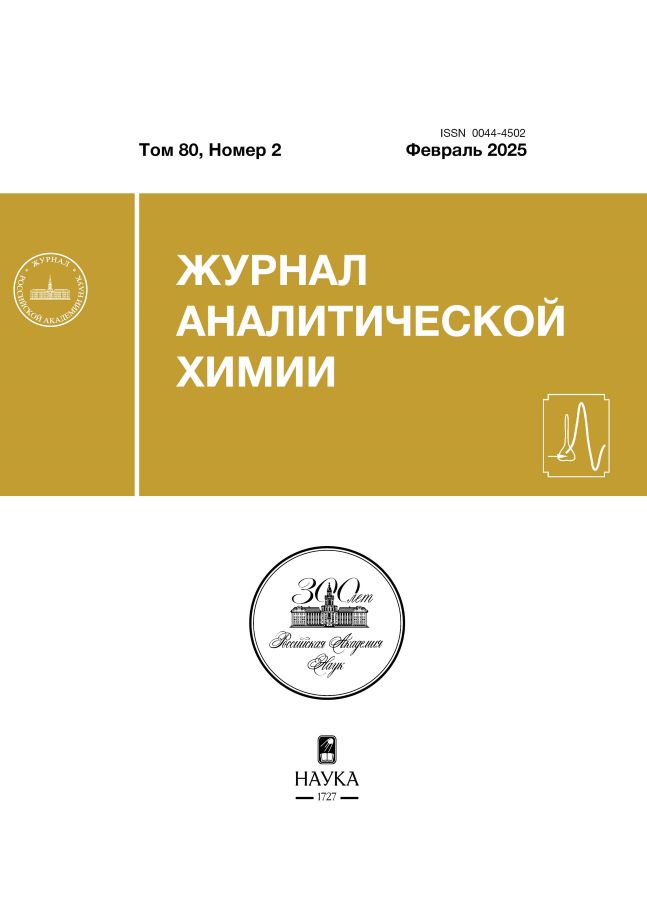Approach to Optimization of Mass Spectrometric Detection Parameters for Identification of Ultra-Small Amounts of Highly Toxic Substances
- Autores: Aigumov M.S.1, Savchuk S.A.2,3
-
Afiliações:
- Noyabrsk Psychoneurological Dispensary
- Association of Specialists in Chemical-toxicological and Forensic Chemical Analysis
- The Institute of Physical Chemistry and Electrochemistry RAS (IPCE RAS)
- Edição: Volume 80, Nº 2 (2025)
- Páginas: 149-160
- Seção: ORIGINAL ARTICLES
- ##submission.dateSubmitted##: 13.06.2025
- URL: https://rjmseer.com/0044-4502/article/view/684151
- DOI: https://doi.org/10.31857/S0044450225020043
- EDN: https://elibrary.ru/adwual
- ID: 684151
Citar
Texto integral
Resumo
The procedure of optimization of the following parameters is described: scanning speed, duration of registration of selective transitions (dwell time), duration of delay in transition from one selective transition to another (pause time). A chromatograph for HPLC with a three-quadrupole mass spectrometric detector (LC-MS/MS Shimadzu 8050) was used. Chromatographic separation was carried out on a column with reversed-phase sorbent Phenomenex Kinetex C18. As mobile phase A was used 0.1 % solution of formic acid in water with addition of 10 mM/L ammonium formate, as mobile phase B – 0.1 % solution of formic acid in methanol with addition of 10 mmol/L ammonium formate. The optimal parameters for confirmatory methods were established: duration of registration of selective transitions – not less than 10 ms, duration of delay in transition from one selective transition to another – 1 ms, scanning speed – from 1000 to 5000 scans per second. This technique has been successfully applied in routine chemical and toxicological studies of urine samples with low content of various narcotic and medicinal substances.
Texto integral
Sobre autores
M. Aigumov
Noyabrsk Psychoneurological Dispensary
Autor responsável pela correspondência
Email: aygumov.m@yandex.ru
Rússia, Noyabrsk
S. Savchuk
Association of Specialists in Chemical-toxicological and Forensic Chemical Analysis; The Institute of Physical Chemistry and Electrochemistry RAS (IPCE RAS)
Email: aygumov.m@yandex.ru
Rússia, St. Petersburg; Moscow
Bibliografia
- The Scheduled MRM algorithm Pro – Automated intelligent design of high throughput, high quality quantitation assays. SCIEX technical note RUO-MKT-02-8539-A.
- Thomas S.N., French D., Jannetto P.J., Rappold B.A., Clarke W.A. Liquid chromatography-tandem mass spectrometry for clinical diagnostics// Nat. Rev. Methods Primers. 2022. V. 2. № 1. P. 96.
- Clarke W., Molinaro R.J., Bachmann L.M., Botelho J.C., Cao Z., French D. et al. CLSI. Liquid chromatography-mass spectrometry methods; Approved guideline. CLSI document C62-A // CLSI. 2014. V. 34. № 16.
- Stone P., Glauner T., Kuhlmann F., Schlabach T., Miller K. New Dynamic MRM Mode Improves Data Quality and Triple Quad Quantification in Complex Analyses. Agilent Technologies Technical Overview, publication number 5990-3595, 2009.
- Triggered MRM: Simultaneous Quantification and Confirmation Using Agilent Triple Quadrupole LC/MS Systems, Agilent Technologies, publication number 5990-8461EN, 2013.
- LC/MS/MS Forensic Toxicology DB, Instruction Manual, 225-28669A, April 2018.
- Baker D., Fages L., Capodanno E., Loftus N. Multi-residue veterinary drug analysis of >200 compounds using MRM Spectrum mode by LC-MS/MS, ASMS 2017 TP-207, Shimadzu.
- König S., Wüthrich T., Bernhard W., Weinmann W. Screening by LC–MS-MS and fast chromatography: An alternative approach to traditional immunoassays? // Spectrosc. Suppl. 2013. V. 11. № 2. P. 22.
Arquivos suplementares





















